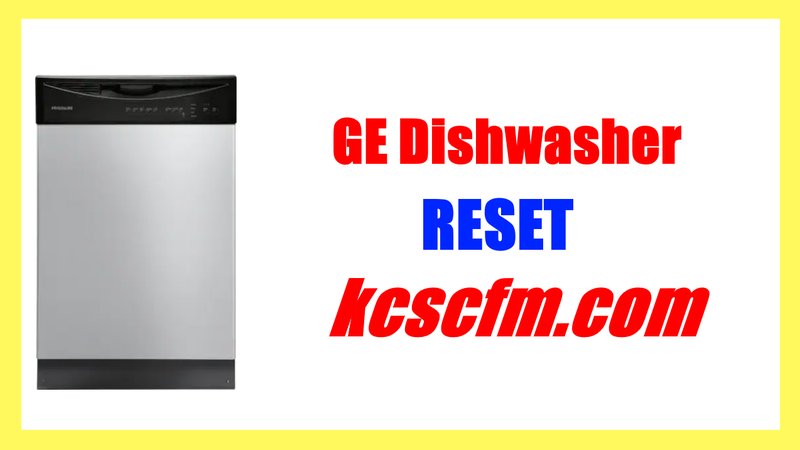
Error codes can pop up for various reasons, from minor hiccups like a temporary glitch to something a bit more complex, like a delicate miscommunication between the dishwasher’s components. It’s similar to when your computer needs a reboot to clear out the cobwebs in its processes. With this guide, you’ll learn how to reset your GE dishwasher and get it back to its sparkling performance in no time. So, let’s dive right in!
Understanding Error Code E3 on Your GE Dishwasher
Before we jump into resetting your dishwasher, it’s crucial to understand what error code E3 represents. In simple terms, an E3 error code generally indicates a problem with the heating element or the temperature sensor. Imagine trying to bake a cake without a properly working oven—it just won’t rise. Your dishwasher faces a similar hurdle: washing dishes at the wrong temperature can prevent them from getting thoroughly cleaned.
The heating element in a dishwasher warms up water to the necessary temperature required for effective cleaning. If something’s not right—like a malfunction in the heating element or a sensor misreading—the dishwasher can’t do its job properly. Sometimes, this error may also result when the water doesn’t heat up within a specified time, which could be due to low water pressure or a kinked hose, much like a garden hose with a twist.
By understanding what E3 means, you can approach the problem like a seasoned detective. Once you know what you’re dealing with, the solution becomes clearer, and you can take the right steps to bring your appliance back to its old self. Now, let’s look at how you can reset that pesky error code.
Steps to Resetting Your GE Dishwasher
So, you’ve identified the E3 error code, and you’re ready to roll up your sleeves and reset your dishwasher. The reset process is straightforward, much like rebooting your smartphone. First things first: you’ll want to power down your dishwasher completely. Think of this as giving your machine a moment of peace to gather itself.
Start by unplugging your dishwasher or turning off the circuit breaker that supplies power to it. After you’ve done this, wait for about five minutes. This downtime is essential because it allows any residual electrical charge to dissipate and the machine’s memory to clear. It’s like giving your dishwasher a brief power nap.
After the waiting period, plug the dishwasher back in or turn on the circuit breaker. Turn on the dishwasher and see if the error code has vanished. Most of the time, this will do the trick and your dishwasher will be ready to tackle the next load of dishes. If the code persists, don’t lose heart; there are a couple more things you can try.
Further Troubleshooting Steps
If resetting your dishwasher didn’t do the job, it might be time to explore a bit further. First, check the heating element. It’s usually located at the bottom of the dishwasher and looks like a metal rod. Make sure nothing is obstructing it, like a pesky piece of silverware that’s slipped below the rack, similar to how a pebble in your shoe can cause discomfort.
Additionally, ensure the water supply is adequate. Turn on the kitchen faucet to check the water pressure. A trickling flow might suggest an issue with the house’s plumbing rather than the dishwasher itself. And it could be helpful to clean the inlet filter, as a clogged one can limit water flow, much like trying to drink a thick milkshake through a straw.
Finally, if the issue persists, it might be time to consider professional help. An experienced technician can diagnose and fix more complex problems that require technical tools and expertise.
Preventative Measures for Future Peace of Mind
To avoid encountering error code E3 again, take some proactive steps to maintain your dishwasher’s health. Regular maintenance can help prevent minor issues from snowballing into major headaches. Clean the dishwasher filter regularly to ensure water flows without hindrance, analogous to keeping your car’s oil fresh and clean for smooth rides.
Also, consider running a cleaning cycle with a dishwasher cleaner once a month. This helps to eliminate any buildup of grease and mineral deposits. It’s a bit like giving your dishwasher a spa day, keeping it in tip-top shape for longer.
Moreover, always check the water supply connection and make sure the hoses aren’t kinked or blocked. This simple check can save you from unexpected water flow issues. By taking these preventative actions, you can enjoy a hassle-free operation and keep those error codes at bay.
Following these steps, you should be well on your way to mastering the art of resetting your GE dishwasher. Remember, a little bit of attention and care can go a long way in keeping your appliances running smoothly—your clean dishes will thank you for it!